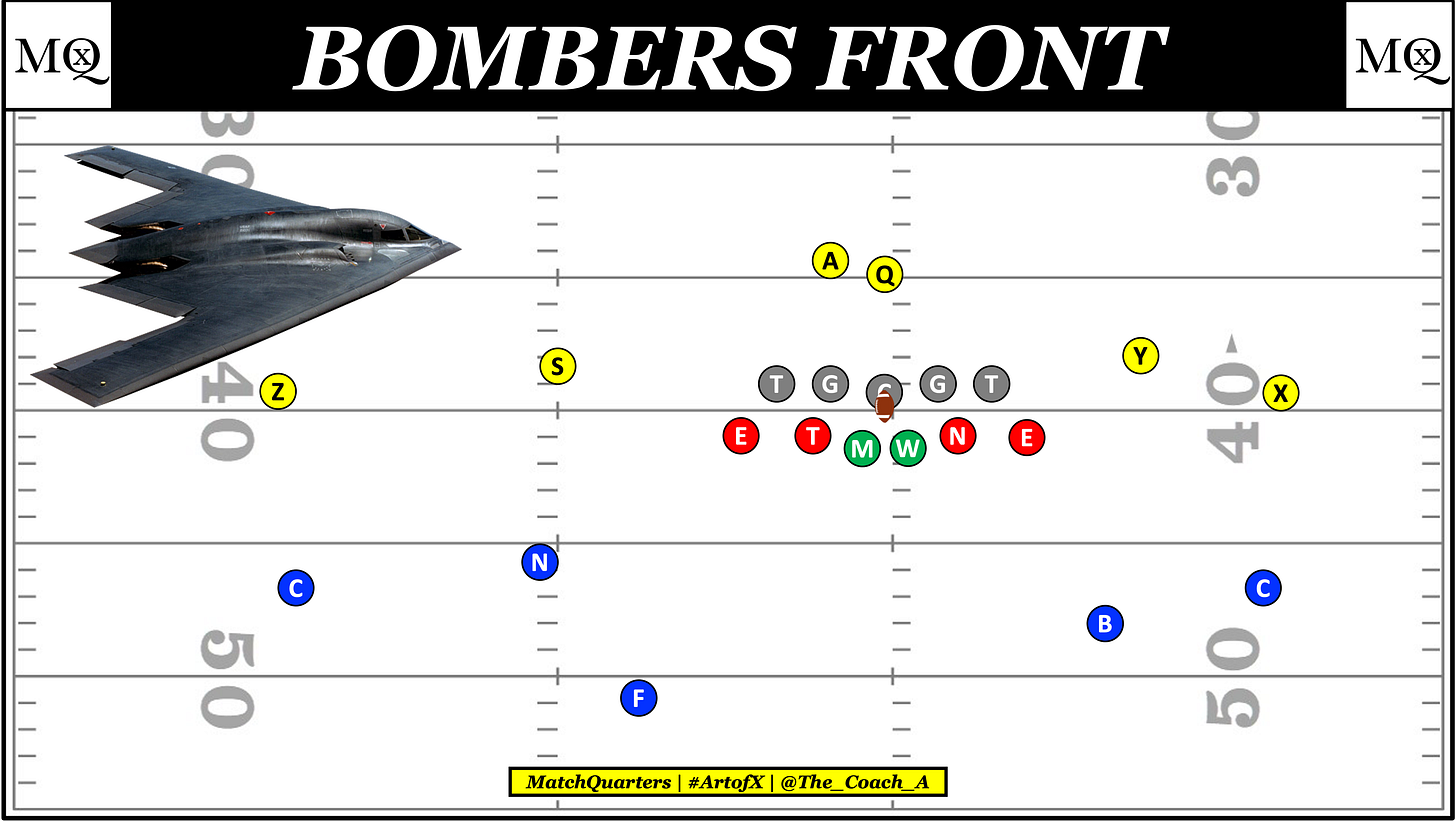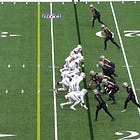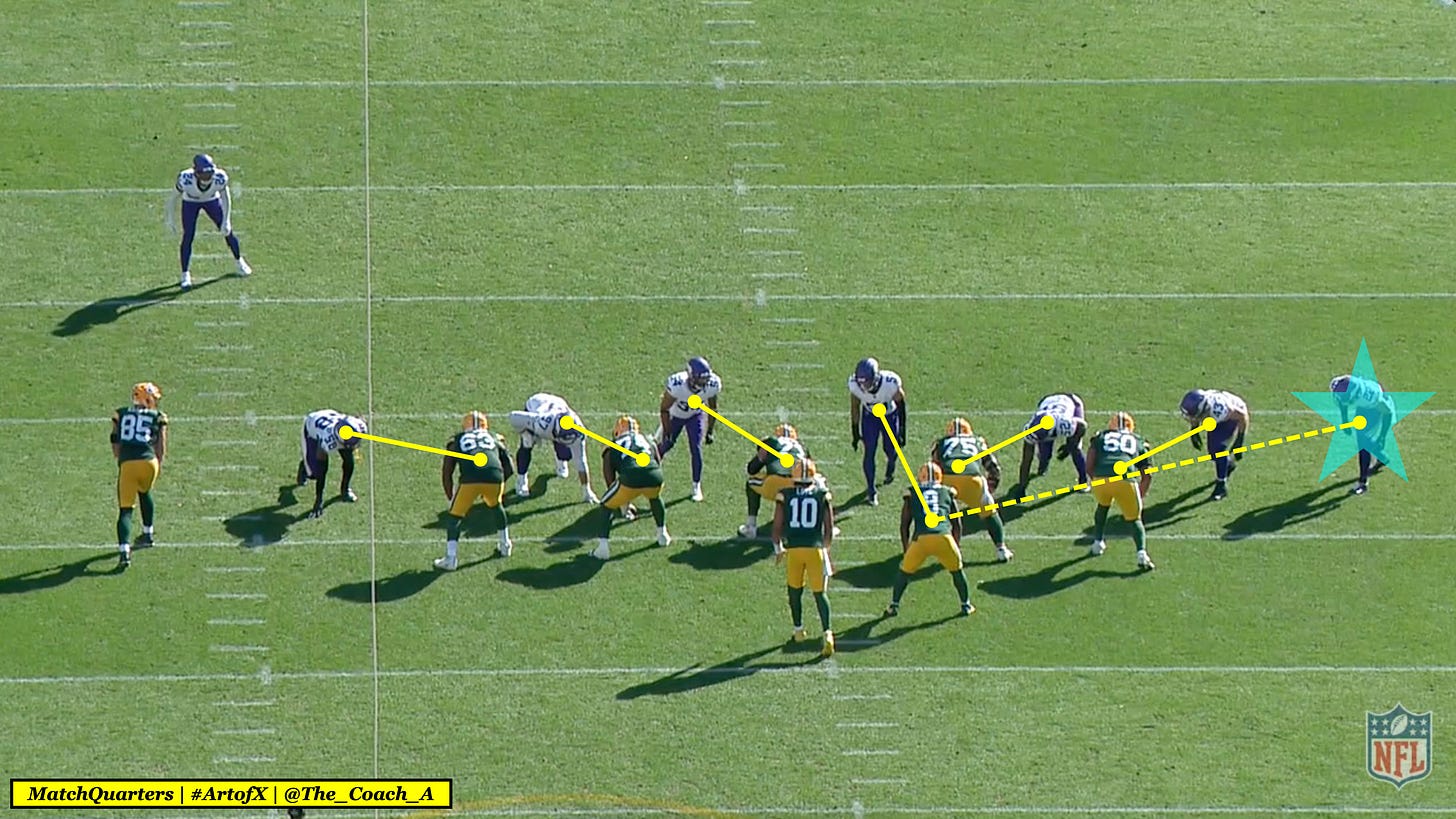The NFL's Favorite Double Mug Pressure
Week 4 in the NFL highlighted one of the top ways defenses are attacking protections from their Double Mug front, and it's not even that expensive.
Double Mug pressures are a standard way defenses attack 3rd Downs and passing downs in the NFL. The alignment uses perceived pressure to toy with the offense’s protection schemes. In long-yardage situations, these formations can ‘trick’ offensive coordinators and quarterbacks into checking into quick strike screens or shallow passes.
Not every snap of a Double Mug presentation needs to be a pressure. In most cases, defenses carry multiple calls that send a different number of pass rushers each time. The perception of pressure can be enough to create mistakes or force offenses to check into plays that are run in front of the sticks.
The Double Mug alignment is a great way to incorporate simulated pressures into a package by dropping the two ILBs out post-snap (perceived pressure) or sending an overhang on a blitz (simulated pressure). The standard rule is to show inside pressure with an outside blitz and vice versa.
A traditional 3rd Down alignment is a ‘Jet’ or wide alignment (above) that places two edge rushers in Wide-5s and two interior D-linemen in Wide-3s (they can even stack the OTs—4t). Typically, the defense will incorporate some stunts into the alignment: an internal twist (above) or a ‘game’ stunt features twisting stunts outside. These twists can help ‘pick’ an isolated o-lineman or play on the Center slide post-snap.
An extension of the Jet Front is to place a mugged linebacker over the Center. Last year, in the NFL, a fad was for teams with elite pass rushers to move their best rusher inside over the Center and let him do his best Allen Iverson crossover impression. The thought is to isolate each offensive lineman on a defender and pick on a weaker center if the offense has one.
‘Finding the donkey’ is a standard practice at every level. Once a defense identifies the weak link in the protection, it can hammer away at its play, manipulating one-on-ones through alignment or simply moving its best player over the top of the blocker. But not every defense wants to have five D-linemen on the field on a 3rd Down or drop an off-ball LB to replace the Edge outside.
The presentation (above) stresses the protection because it outnumbers the offense's available blockers. Placing an extra defender outside the RB adds to the numbers. The defense can have seven total defenders on the line of scrimmage with a DB stacked on every receiver.
The Double Mug (Bombers) presentation at the NFL level typically forces a predictable reaction from offenses. In Week 4, three teams, in particular, took advantage of this standard practice: the Vikings, Texans, and Broncos.
The typical reaction from NFL offenses is illustrated above when presented with a 7-O Double Mug alignment. The Packers RB aligns a yard in front of the quarterback, ensuring he can collect his defender quickly post-snap, giving the quarterback time to retreat. Though there is an extra defender outside, the proximity of the mugged LB takes precedence; the QB is now in charge of the ‘free’ defender outside if everyone blitzes.
The primary way offenses attack this alignment is with Combo protection. The Center will choose a mugged defender to slide to, and the RB will be responsible for the other mugged LB. Every O-linemen is accountable for a D-linemen. Again, if the defense drops a seventh defender to the line of scrimmage, the QB is responsible for him,
Understanding protections is critical to developing a blitz pattern that will ultimately result in pressure. In Week 4, we saw three different teams follow the same pattern. Once the defense knows the Center’s block, it can manipulate the protection. In all three cases illustrated below, the defense popped out the LB to the Center’s slide and blitzed the LB the RB was responsible for.
By doing this, the defense ensured the RB did not have time to get to the edge to protect the QB. The quarterback, Center, and RB have to view the pressure similarly. The quarterback assumes the RB's responsibilities as the LB pops out, and Cetner will exchange them. The Center overtakes the blitzing LB, and the RB peels to the edge to pick up the Safety. That isn’t always the case.
A powerful platform used on Microsoft® Visio & PowerPoint to allow football coaches to organize, format, and export Playbooks, Scout Cards, and Presentations efficiently.
Keep reading with a 7-day free trial
Subscribe to MatchQuarters by Cody Alexander to keep reading this post and get 7 days of free access to the full post archives.










